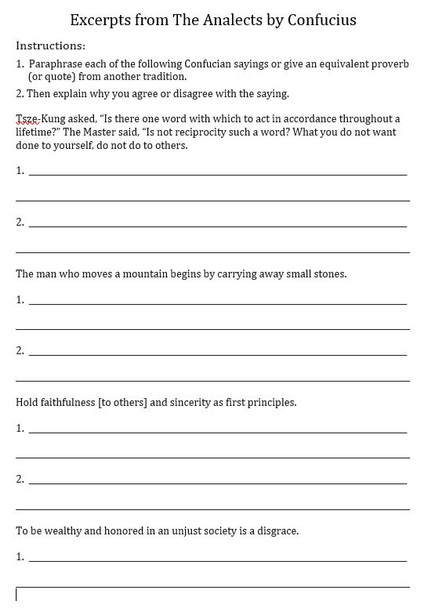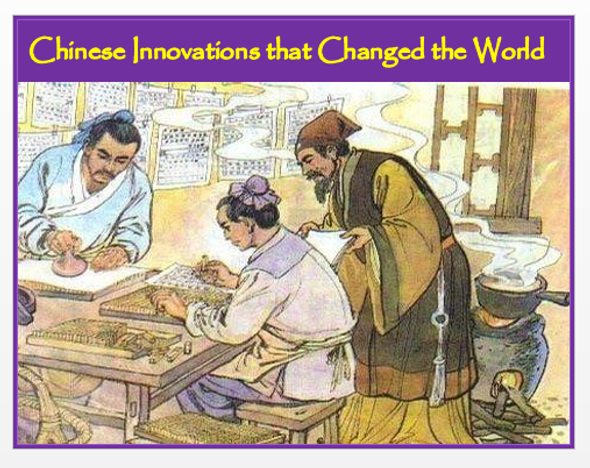Chinese Culture: Taoism, Confucianism, Buddhism, and the Creation of the World
- Bulk Pricing:
- Buy in bulk and save
- Contributor:
- Shawneen Morrison
- Grade Level:
- 9-12
- Product Type:
- Unit Lesson
- File Type:
- Doc
- Pages:
- 28
- Answer Key:
- Yes
Description
This mini-unit on Chinese philosophy, is designed to introduce students in Western cultures to the philosophical traditions of China.
The first lesson introduces the Pan Gu creation story. After students analyze the story to determine its message regarding the nature of the world and of existence as a human, they go on to contrast its message to other (especially the Judeo-Christian) creation traditions.
Next, Taoism is introduced (including an engaging demonstration of the importance of living in the moment) and students work in groups to use their new knowledge to “translate” the message of several Tao Te Ching passages. In the next stage, students generate lists of five rules that everyone should follow to make society better. Then they are exposed to Confucius’s Five Virtues and the Five Relationships. Students are sorted into a continuum of “winners and losers” according to their status in the Confucian system and when the gender implications are clear, they read a classic Chinese poem on the misfortune of being born female.
Then students work to “translate” passages from The Analects and articulate their agreement or disagreement with each passage. Finally, students turn to the Buddhist tradition. Students begin by brainstorming a list of the reasons they believe there is suffering in the world and discussing whether there is any way to end human suffering. Then they learn about the Four Noble Truths and the Eightfold Path. They learn about meditation and then read a list of meditations that Buddha was to have given to monks who were struggling with spiritual focus. Then they contrast those elements of the Buddhist tradition with the Judeo-Christian tradition (as incorporated into the 10 Commandments and the Prayer of St. Francis). I find that this last comparison helps students have a stronger context for Chinese philosophies that facilitates a more tolerant attitude toward them. However, the Buddhist portion of the lesson stands alone if the comparison is not a good fit for your classroom.
INCLUDED IN THIS LESSON:
• Complete Lesson Instructions
• Discussion Notes Including Extra Additional Teacher Notes
• Student Handouts on Pan Gu, Taoism, Confucianism, Buddhism, and Meditation
• Student Analysis Handouts on the Tao Te Ching, The Analects, the Discourse on Loving Kindness, and a comparison of the Buddhist and Judeo-Christian traditions
• All Answer Keys
• Common Core Alignment
Created by Shawneen Morrison - Visit My Store























